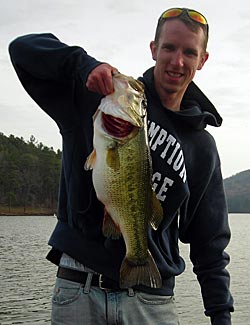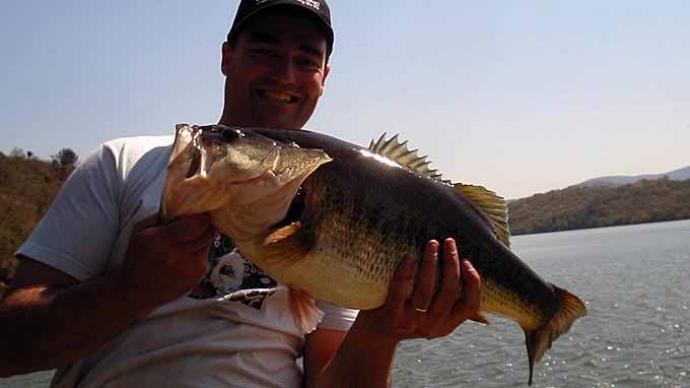
There is no such a thing as a standard summer pattern, because no two lakes are alike. In the last year or so you have seen articles on why it is so hard to catch bass, not just in the summer, but all year long. Some claim that the bass are just gone from the lakes and others talk about how bass are smart enough to know the difference between an artificial lure and live bait. I'm no biologist, but like the other anglers and writers, I have my own ideas about why it seems tougher to catch bass now than in the past.
If you stop and think about the last three years, they have not been what could be called average years. Starting from in the fall of 1997 through the fall of 2000, we had warm winters, low-water conditions and when it did rain, the ground gobbled it up. We never had consistent, steady spring or fall rains to fill the lakes, like we would on a normal year. This fall and winter has been the opposite, steady constant rain, even ice and snow, with colder than normal days. The cooler temperatures have stretched into March, making some of the normally hot lakes, in February, like Palestine tough fishing.
Lake Fork has been tough fishing for a few years, but I think the big bass are still there waiting for us to find them. Fork, for example, has had a couple of things that changed the lake, as we knew it in the past. The lake itself has changed, along with many of our other lakes in the area. There's not as much grass, duckweed and hydrilla as in the past. The bass have adapted to a different way of life, but I think most of anglers haven't made the adjustment to meet the new conditions.
We all tend to get into a rut of fishing the same spots, the same lures, and same patterns. We need to re-evaluate each lake and adapt, or change, our style of fishing the lakes, as the bass have made the change to their environment.
I think the weather the last few years has had a major effect on our lakes, their makeup, and the way the bass have reacted to those environmental changes. You need to look at your lake and see what changes have occurred and what you may need to change in your fishing style or selected areas. Along with the other anglers and writers, I think that bass do get acclimated to a style of lure, presentation or color, especially in highly pressured lakes. With some of the lifelike crankbaits and plastics on the market now though, it may get easier to fool them again.
Lakes with hydrilla, lily pads, and duckweed along with cattails give you possible spots to find bass all day. The vegetation gives bass a cool hangout during the midday heat as well as an excellent ambush spot early and late in the day while feeding. Fish the area between the vegetation and the bank early and late in the day with topwaters, buzzbaits, trick worms and twitch baits as well as the grass or hydrilla beds themselves. As it gets closer to noon and during the day, use jigs or Texas rigs on the deeper areas. Midday fishing of deep hydrilla can produce some nice bass.
In lakes with mostly timber, laydowns and stumps works the backs of coves with good creeks feeding them early and late. As the sun gets up high, move out to the creek channel, main-lake points and humps. Around the stumps and laydowns, flip or pitch a jig or Texas-rigged worm. A spinnerbait can also be flipped around the laydowns, bumped into the stumps, thrown up on, and dragged off the bank into the water, or slow-rolled along the bottom back to the boat. Later in the day crankbaits and Carolina rigs along with a Texas rig are good on the points, humps and creek channel or ledges.
In older lakes with minimal vegetation and timber it gets a little tougher. The bass in these type lakes tend to use ditches, creek channels, ledges, rock piles, or humps as their hangouts and ambush spots. You need to spend some time scouting these areas. Some may take some time to find, but a map can help, even on an old lake. Although a lot of the coves, flats, ditches and creeks may have filled in with silt, there may be some definition still there to find. I would look at the obvious places first the creeks, points, ridges, and humps. Then set up a pattern, going back and forth with your electronics finding those special hot spots.
When fishing these types of lakes, try a smaller line size, baits and stick to baitfish or crawfish colors. The more lifelike the better when fishing open water or areas with very little structure or cover. In clearer water I would recommend smaller baits in baitfish colors indigenous to the area. A 1/8- or 1/4-ounce spinnerbait, small bodied crankbaits, tube baits, small worms, and craws would be good.
Summer can be a tough time of the year. So study your favorite lake and watch for schooling bass in the coves and main lake. Schooling bass can be a heart stopping event as well as the highlight of a long hot day.
Good Catching




